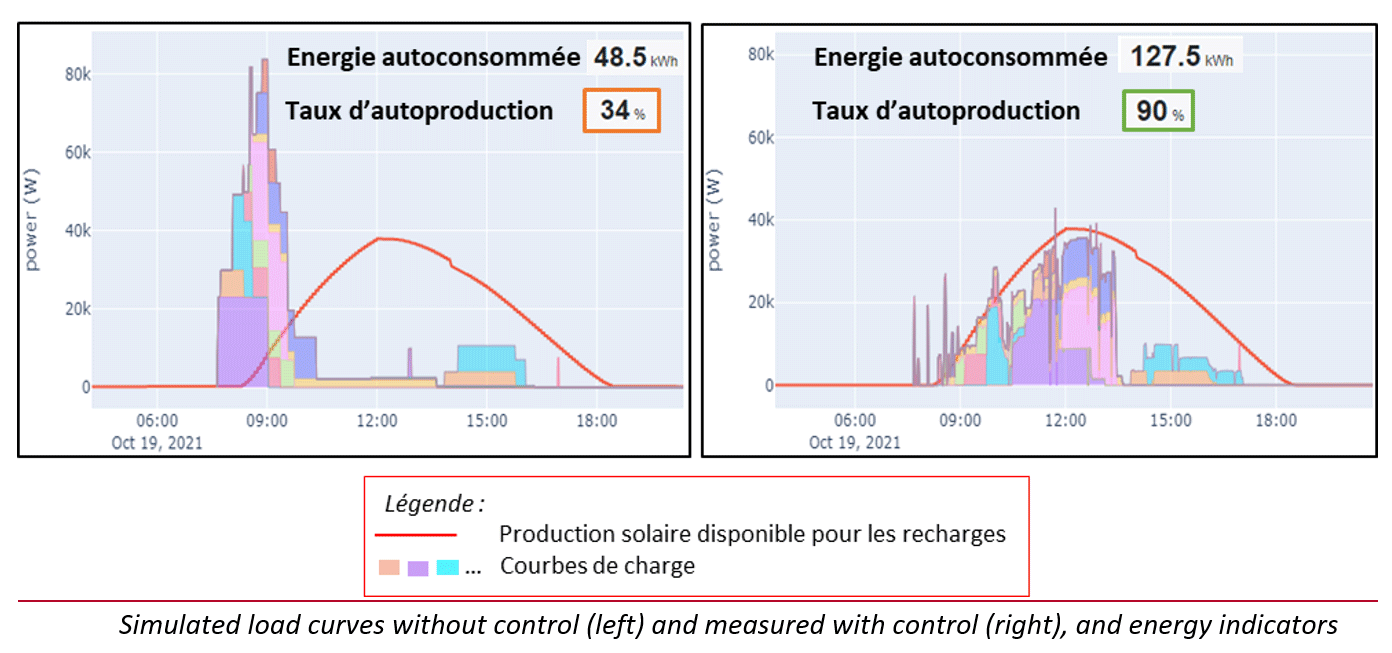The CEA centre in Cadarache, near Aix-en-Provence, has one of the largest electric vehicle charging infrastructures in the PACA region, with around 400 vehicles recharging every day at 100 charging points. Thanks to this infrastructure, the French transmission network operator RTE and the CEA have been conducting a large-scale experiment since the autumn of 2021 with a system for supervising and managing the recharging of the electric vehicles of the centre's employees. This management is done in real time and must combine user satisfaction, respect for their choices and synchronisation of the power consumed with the production of a solar photovoltaic plant. The results obtained over several months show that it is possible to increase the share of solar energy in the energy used by the charging stations from 34% to 90%, thanks to the control of vehicle charging.
The program for intelligent management and control of electric vehicle charging has been developed since 2010 by CEA teams at the National Solar Energy Institute (INES) in Chambéry. It controls the electricity consumption of a group of vehicles according to an external set point without affecting the comfort of the user or the life of the batteries. The information system used for this experiment, also developed at the CEA, makes it possible to :
- Collect data.
- Communicate with the charging stations and monitor their status.
- Provide statistics.
- Control the charge and allocate charging power according to the user's preferences and, in particular, the desired departure time at which the vehicle must be fully charged.
The experiment, which ran from autumn 2021 to summer 2022, consisted of supplying the consumption of 24 charging stations at the CEA centre in Cadarache with a fraction of the Mégasol photovoltaic solar power plant, located in the immediate vicinity of the centre. The study, which compares the rate of self-production 1 with and without supervision over 8 months, shows :
- That the developed supervision system allows to efficiently maximise the use of solar energy and to increase its share up to 60 percentage points, without any prejudice for the user.

- The self-generation rate with and without control is high on sunny days. The supervision system is even more advantageous on cloudy days when the time delay of recharging allows less power to be drawn from the electrical network and thus favours solar production.
- Users' implication is essential.
- Piloting may increase the occupancy rate of the stations since the charging of certain vehicles is more extended in time, even if the main problem of occupancy of the stations remains the continuation of parking at the end of the charge.
In a context of increasing use of electric vehicles, this study confirms that the coupling of solar production and intelligent charging management is a real opportunity. RTE plans to extend the scope of the experiments by including other types of flexible electrical consumption (such as heating, air conditioning, water heaters, storage systems, etc.). The results of the experiments will also be used to estimate the consumption of electric vehicles on a larger scale (region then country) and to analyse the impact of this consumption on the network.
1 - The self-generation rate corresponds to the share of electricity production from the solar power plant compared to the total electricity consumption of the load points.